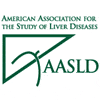 When treated with sofosbuvir and ribavirin before receiving a liver transplant, two out of three people with hepatitis C virus in a recent study averted viral recurrence, aidsmap reports. Michael Curry, MD, of Beth Israel Deaconess Medical Center in Boston presented findings from the open-label Phase II study of 61 people with hep C at the 64th Annual Meeting of the American Association for the Study of Liver Diseases (AASLD) in Washington, DC.
When treated with sofosbuvir and ribavirin before receiving a liver transplant, two out of three people with hepatitis C virus in a recent study averted viral recurrence, aidsmap reports. Michael Curry, MD, of Beth Israel Deaconess Medical Center in Boston presented findings from the open-label Phase II study of 61 people with hep C at the 64th Annual Meeting of the American Association for the Study of Liver Diseases (AASLD) in Washington, DC.
All the participants had well-compensated liver disease and were awaiting a transplant because of hepatocellular carcinoma, the most common kind of liver cancer. They took a regimen of the nucleotide polymerase inhibitor sofosbuvir and ribavirin as they waited for their transplants. Study protocol dictated a minimum of 12 weeks of treatment before liver transplantation, with an initial maximum of 24 weeks that was subsequently increased to 48 weeks. Participants took their last sofosbuvir and ribavirin doses the day they received their liver transplants.
Forty-one of the participants had an undetectable hep C viral load when receiving a liver transplant, and three others received a transplant with a detectable viral load. Ten participants stopped treatment; four completed treatment and were still waiting for transplants; and one remained on therapy awaiting a transplant.
A total of 64 percent of those who had an undetectable viral load upon receiving a transplant kept their undetectable status 12 weeks after the operation.
The only factor that influenced the likelihood of maintaining an undetectable viral load post transplant was a longer time spent at undetectable before the operation.
The hep C drugs proved generally safe and well tolerated. A total of 11 serious adverse events were reported, none of which the investigators concluded were related to sofosbuvir. Two people (3 percent) discontinued because of adverse events, and there were seven cases of grade 4 laboratory abnormalities. Three participants died before receiving a transplant, and five died after the operation. The most common side effects were fatigue (38 percent), anemia (23 percent) and headache (23 percent).
To read the aidsmap story, click here.
To read the conference abstract, click here.
Advertisement
Advertisement
Advertisement






Comments
Comments